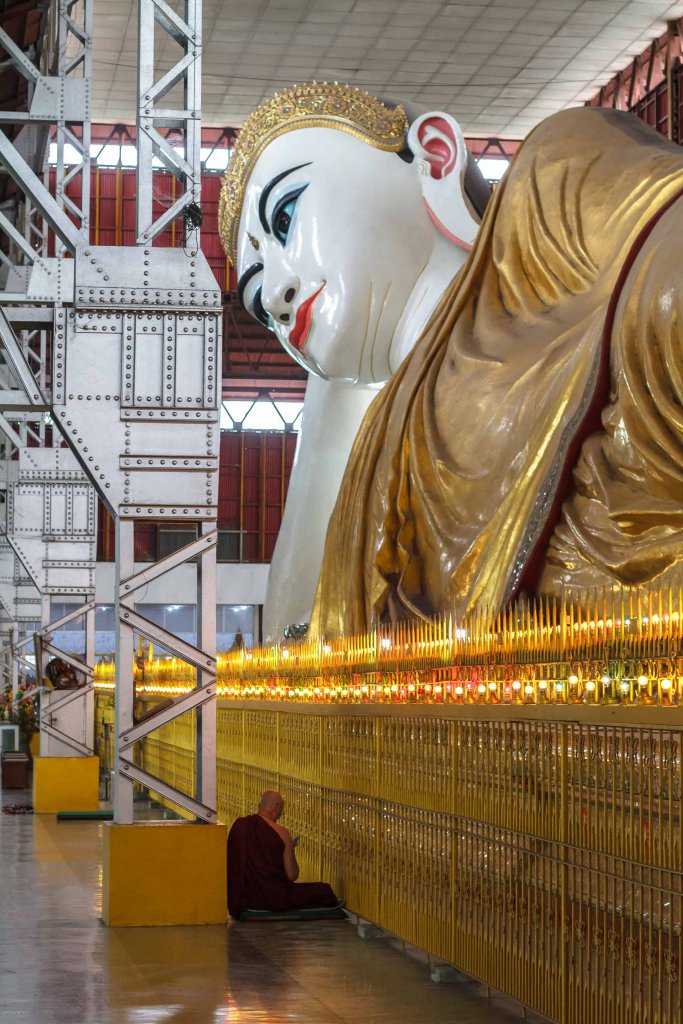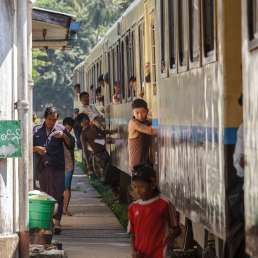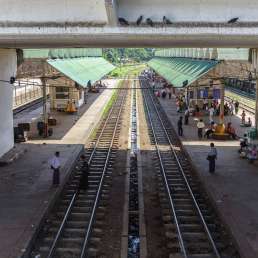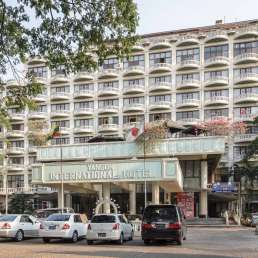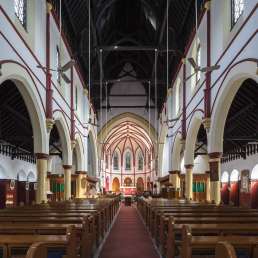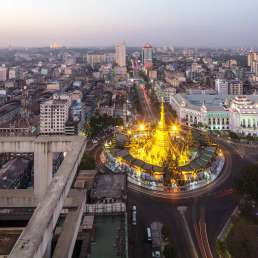Otherwise: Reclining Buddha
Address: Shwegondaing Lane
Year built: 1907-1912, 1957-1966
Architect: Unknown
This massive structure houses one of the largest reclining Buddha statues in Myanmar, which dates back to the early 20th century. From Shewgondaing Road the red roof of this vast indoor structure is visible from afar, but the best views are probably enjoyed from around the nearby Ngadatgyi Pagoda as you arrive or leave. The enormous 65-metre long Buddha is in the reclining position of his last dying days. The donor of the original Chaukhtatgyi Pagoda and the Buddha statue was a man called U Po Tha. Born in 1857, he became one of the country’s leading rice merchants and a generous benefactor. (His funds also built the northern main praying hall at the Shwedagon Pagoda.)
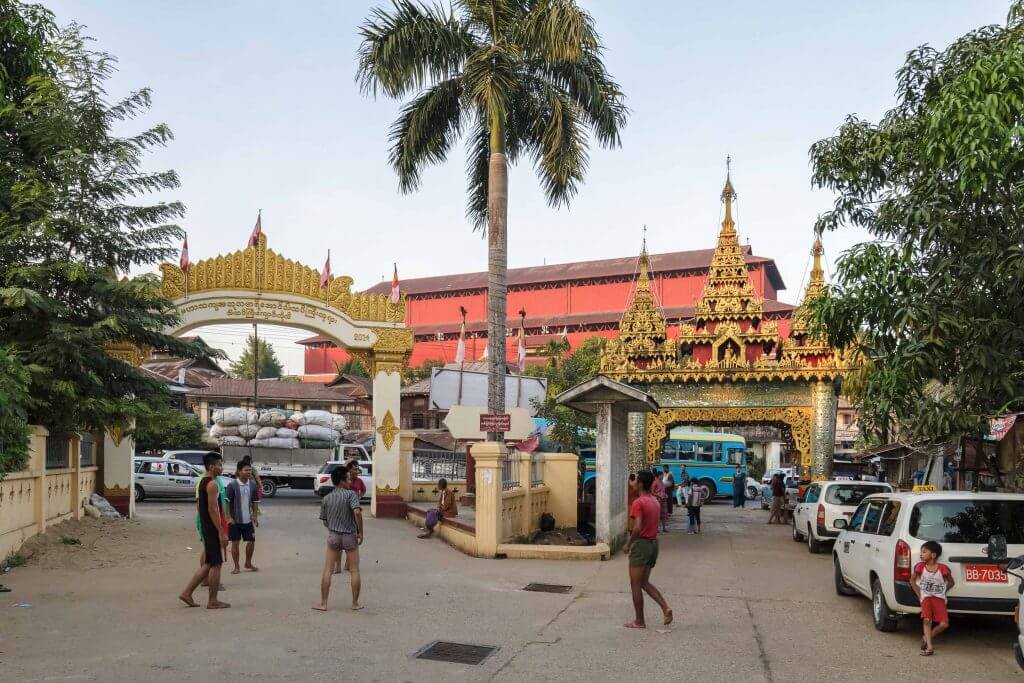
The tall and shiny steel girders bear the inscription “Lanarkshire Steel”, indicating that they were produced in Motherwell, just outside Glasgow. Steel produced in Britain was shipped halfway around the world and used in countless buildings of Rangoon. “Falkirk Iron Foundries”, “Cowie Bros., Glasgow” and “Cargo Fleet, Middlesbrough” are only some of the inscriptions you find across town. Some steel was also cast locally, for example at DD Coath Foundry, which produced the steel staircases for archival stands inside the legendary Secretariat. In this pagoda, the use of steel enabled a new Buddhist architectural style, bigger and utilitarian, making space for a Buddha statue of monumental dimensions.
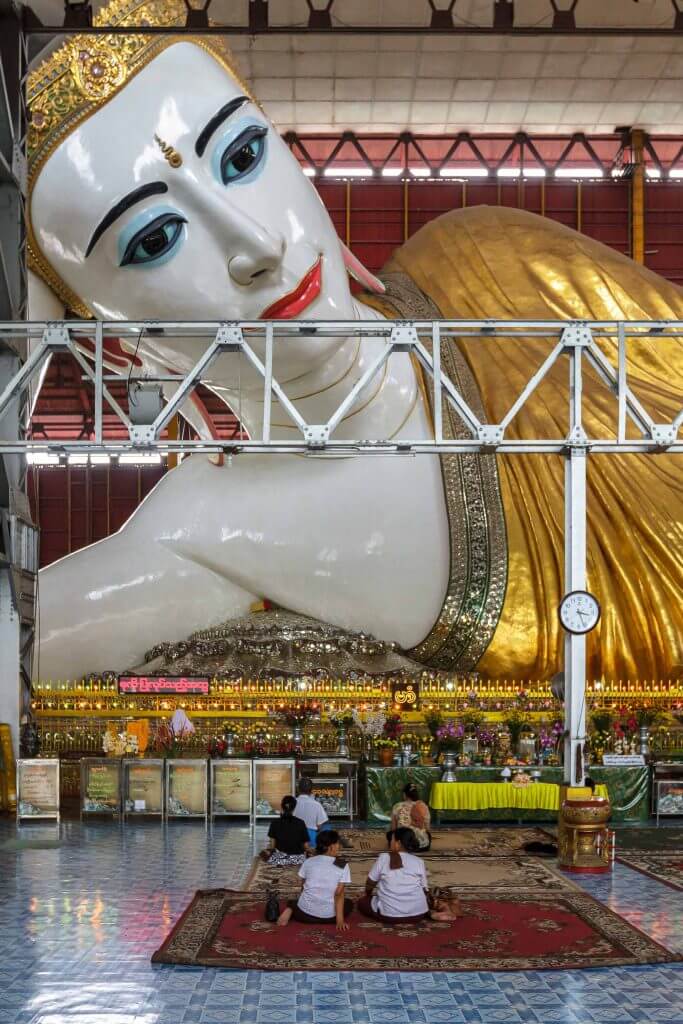
Major repairs and alterations to the Chaukhtatgyi Pagoda were carried out between 1957 and 1966. During that process, several metres were added to the statue, making it the third largest of its kind in today’s Myanmar. Unusual for a statue of this size, this Buddha’s eyes (measuring 1.7 × 0.5 metres) are made of glass. A one-day festival is held in the pagoda grounds every December. Instead of walking through the streets for alms, monks are brought food by the people living in the neighbourhood.
